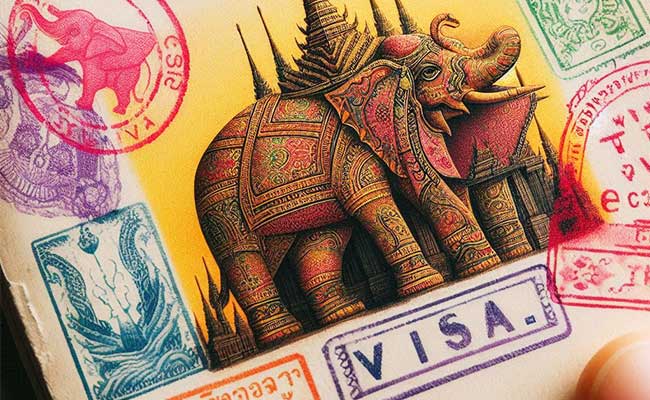At one time, getting a Thai visa in Southeast Asia was straightforward. You'd do a border run to a neighboring country, walk into a consulate or embassy in Laos, Malaysia, or Vietnam, and make your application. In the good old days, you'd be done in time for a tipple by the Mekong River come evening.
However, the digital era continues to change things. In recent years many consulates have changed to an appointment-based system whereby you have to book an appointment online prior to your visa run.
Now, several Thai consulates across the region are shifting to online-only e-visa applications, while others still offer traditional paper-based applications but with online appointments.
Here's a detailed guide on which consulates are transitioning to e-visa, which still require appointments, and which allow walk-in applications, so that you don't spend a wasted trip across the border.

Consulates Issuing E-Visa Only
The following consulates in Southeast Asia no longer accept in-person visa applications, and have moved exclusively to e-visa systems. These consulates include:
- Vietnam: Hanoi, Ho Chi Minh City
- Malaysia: Kuala Lumpur, Penang, Kota Bharu
- Cambodia: Phnom Penh
If you’re applying for a Thai visa at one of these consulates, you’ll need to submit your application online as walk-ins will no longer be accepted.
Important Note: You must be physically located in the country where the Thai consulate is based to apply for an e-visa. This means you can’t apply for an e-visa for Thailand from outside of these countries.
The Problematic Wait for Your Visa
So you might be thinking that the e-visa system seems more convenient because, for instance, you could take a trip to Vietnam, apply for the Thai e-visa online, and head back as soon as you’ve submitted your application.
But here's the catch: what happens if they request additional documents after you’ve already left the country? Even worse, if your application gets rejected, you'd have to reapply.
In consideration of this, you will have to stay in the country for the 5-10 days it takes to process the visa. This makes the e-visa system less efficient than the traditional walk-in method, which often takes just a day, whether or not you’ve scheduled an appointment.
Consulates Requiring Online Appointments for Paper Applications
For those who prefer the traditional route of submitting paper applications, certain consulates still accept in-person applications but require you to book an appointment online beforehand. This hybrid approach is currently offered by:
- Laos: Vientiane, Savannakhet
- Myanmar: Yangon
Even though these consulates allow walk-in applications, you won’t be able to just show up. An online appointment is necessary to gain entry. One might speculate that there may be agents around the locality who, for a fee, are able to get you an appointment without going through the online process, but I wouldn't chance it.
Consulates Allowing Walk-In Applications Without Appointments
Some consulates have decided to stick with the classic approach and still allow walk-in applications without any prior appointments. These include:
- Indonesia: Jakarta
- Taiwan: Taipei
- Philippines: Manila
Key Consideration for Non Immigrant O Visa Applicants (Marriage)
For those seeking the year-long, multi-entry Non-O visa, which is often used for those applying based on marriage, there is a new consideration to keep in mind. This visa was once popular at the Thai consulate in Ho Chi Minh City, but the shift to e-visa has limited its availability. Now, the best places to apply for this particular visa are at the consulates in Savannakhet (Laos) and Yangon (Myanmar).
Adapting to the Digital Shift
While the shift to e-visa applications aims to streamline the process and make it more convenient, it also means us travelers and expats need to adjust our approach to visa applications.
Gone are the days of taking a last-minute minivan to Laos or catching a flight to Penang without an appointment.
As more consulates adopt the digital approach, it’s likely that the remaining few will transition to e-visas in the future. For now, make sure to double-check the specific requirements for each consulate before you plan your trip.
Tips to Start Planning Your Trip Now:
Don’t Forget Travel Insurance
Travel insurance protects you against illness, injury, theft, and cancellations. I never travel without it. I’ve been using SafetyWing for years. You should too.
Book Your Accommodation
Best hotel rates are found at Agoda and Hotels.com.
Considering a Backpack?
Check out this guide for the best options.
Last Updated on



Leave a Reply